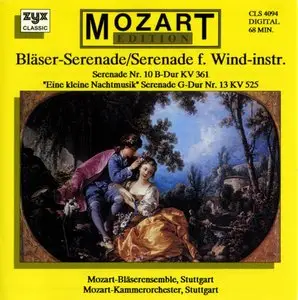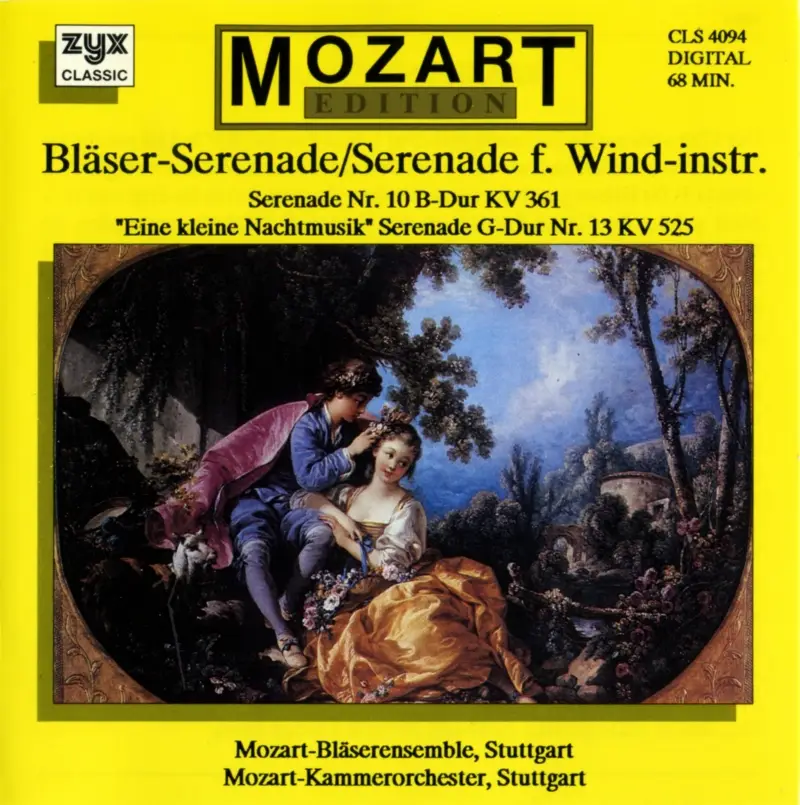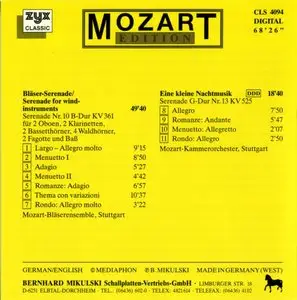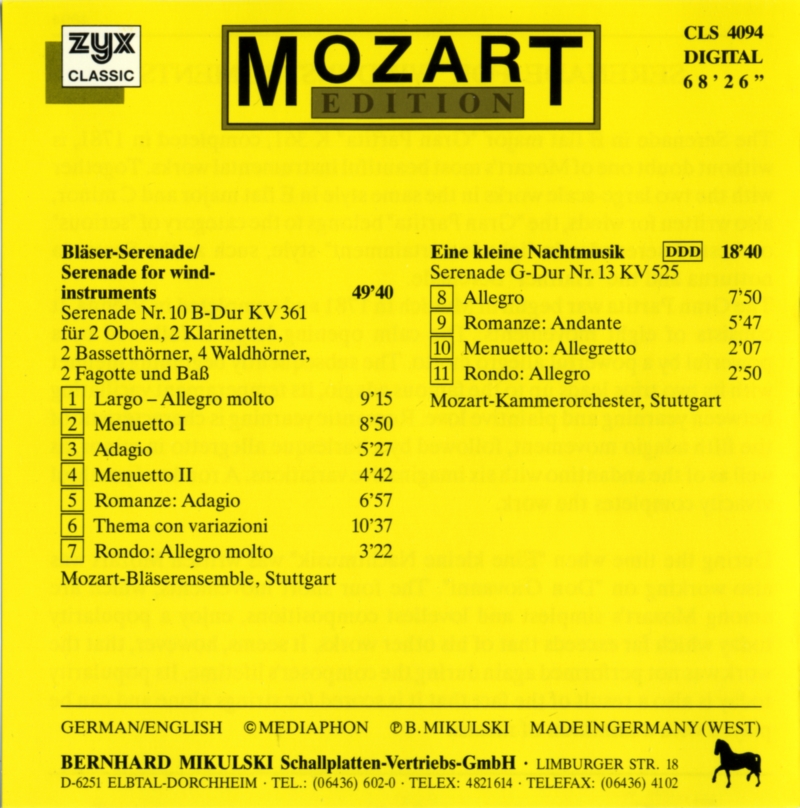W.A.Mozart - Serenade for wind-instruments No.10, Eine kleine Nachtmusik
Mozart-Blaserensemble & Mozart-Kammerorchester, Stuttgart
CD | FLAC/MP3-320kbps | 353.1/167.2Mb | 1:08:20 | ZYX CLASSIC
Mozart-Blaserensemble & Mozart-Kammerorchester, Stuttgart
CD | FLAC/MP3-320kbps | 353.1/167.2Mb | 1:08:20 | ZYX CLASSIC
Contents:
Serenade for wind-instruments No.10 in B-major KV361,
Eine kleine Nachtmusik - Serenade in G-major Nr. 13 KV525
Mozart-Blaserensemble & Mozart-Kammerorchester, Stuttgart
The Serenade in B flat major "Gran Partita" K 361, completed in 1781, is without doubt one of Mozart's most beautiful instrumental works. Together with the two large-scale works in the same style in E flat major and C minor, also written for winds, the "Gran Partita" belongs to the category of "serious" orchestral serenades in light "entertainment" style, such as the Serenata notturna and the "Haffner" Serenade. The Gran Partita war begun in Munich in 1781 and completed in Vienna. It consists of eight movements. The calm opening largo is followed by a powerful by a powerful allegro molto. The subsequently beginning menuet with its two trios leads up to the famous adagio, its temperament vacillating between yearning and plaintive love. Romantic yearning is characteristic of the fifth adagio movement, followed by a burlesque allegretto in minor, as well as of the andantino with six imaginative variations. A rondo of youthful vivacity completes the work. During the time when "Eine kleine Nachtmusik" was written Mozart was also working on "Don Giovanni". The four short movements, which are among Mozart's simplest and loveliest compositions, enjoy a popularity today which far exceeds that of his other works. It seems, however, that the work was not performed again during the composer's lifetime. Its popularity today is also a result of the fact that it is scored for strings alone and can be played with a minimun of means.From the disk booklet
Download links:
In the FLAC format (353.1Mb)
http://rapidshare.com/files/15...de_f_Wind_instr_FLAC.part1.rar
http://rapidshare.com/files/15...de_f_Wind_instr_FLAC.part2.rar
http://rapidshare.com/files/15...de_f_Wind_instr_FLAC.part3.rar
http://rapidshare.com/files/15...de_f_Wind_instr_FLAC.part4.rar
In the MP3-320kbps format (167.2Mb )
http://rapidshare.com/files/15...ade_f_Wind_instr_MP3.part1.rar
http://rapidshare.com/files/15...ade_f_Wind_instr_MP3.part2.rar
Password: parol
In the FLAC format (353.1Mb)
http://rapidshare.com/files/15...de_f_Wind_instr_FLAC.part1.rar
http://rapidshare.com/files/15...de_f_Wind_instr_FLAC.part2.rar
http://rapidshare.com/files/15...de_f_Wind_instr_FLAC.part3.rar
http://rapidshare.com/files/15...de_f_Wind_instr_FLAC.part4.rar
In the MP3-320kbps format (167.2Mb )
http://rapidshare.com/files/15...ade_f_Wind_instr_MP3.part1.rar
http://rapidshare.com/files/15...ade_f_Wind_instr_MP3.part2.rar
Password: parol





